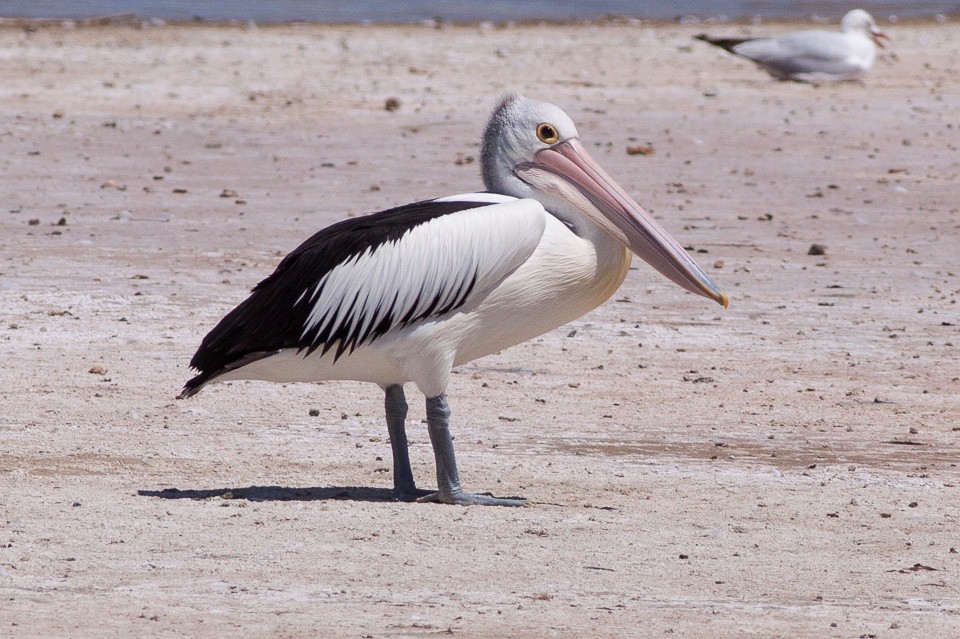 Where does australian Pelican usually live?
Where does australian Pelican usually live?
Where does australian Pelican usually live?
This species can occur in large expanses of mainland Australia and Tasmania. Australian pelicans occur primarily in large expanses of open water without dense aquatic vegetation. The habitats that can support them include large lakes, reservoirs, billabongs and rivers, as well as estuaries, swamps, temporarily flooded areas in arid zones, drainage channels in farmland, salt evaporation ponds and coastal lagoons. The surrounding environment is unimportant: it can be forest, grassland, desert, estuarine mudflats, an ornamental city park, or industrial wasteland, provided only that there is open water able to support a sufficient supply of food. However, they do seem to prefer areas where disturbance is relatively low while breeding. They may also roost on mudflats, sandbars, beaches, reefs, jetties and pilings. The species became first known to occur in New Zealand from a specimen shot at Jerusalem in 1890 and small numbers of subfossil bones, the first found at Lake Grassmere in 1947, followed by records of other stray individuals. The bones were later described as a new (sub)species, Pelecanus (conspicillatus) novaezealandiae (Scarlett, 1966: "New Zealand pelican") as they appeared to be larger, but Worthy (1998), reviewing new material, determined that they were not separable from the Australian population. These fossils were first found in 1930. Australian pelicans follow no particular schedule of regular movement, simply following the availability of food supplies. Drought frequently precedes movements. When the normally barren Lake Eyre filled during 1974 to 1976, for example, only a handful of pelicans remained around the coastal cities: when the great inland lakes dried again, the population dispersed once more, flocks of thousands being seen on the northern coasts. On some occasions, they are simply blown by the wind to new locations. It is a fairly regular visitor to the southern coast of New Guinea, as well as the Bismarck Islands and Solomon Islands. It occurs as a vagrant to Christmas Island, Vanuatu, Fiji, Palau and New Zealand. A population irruption occurred in 1978 into Indonesia, with Australian pelicans reaching Sulawesi, Java and possibly also Sumatra.
People often ask
Related Searches
Scientific Classification
Phylum
Chordates Class
Birds Order
Pelicans and Relatives Family
Pelicans Genus
Pelicans Species
Australian Pelican 